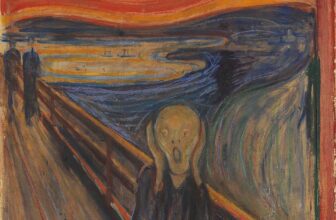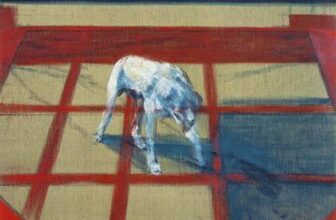
Unraveling Salvador Dali’s Psychological State of Mind
Salvador Dalí, one of the most eccentric and celebrated artists of the 20th century, remains an enigma even decades after his passing. His surrealist works, marked by melting clocks, dreamlike landscapes, and bizarre, yet deeply evocative imagery, have fascinated audiences for generations. However, beyond his artistic genius lay a mind riddled with complexities, psychological disorders, and personal struggles. From allegations of being disowned to questions about his mental health and final words, Dalí’s life was as surreal as his paintings.
Many historians and psychologists have speculated that Salvador Dalí exhibited signs of several psychological disorders throughout his life. Some believe he may have suffered from schizotypal personality disorder, a condition characterized by eccentric behavior, peculiar beliefs, and difficulty maintaining close relationships. His flamboyant and erratic behavior, obsession with symbolism, and belief in his own uniqueness align with the symptoms of this disorder.
Dalí also displayed obsessive tendencies and a preoccupation with death, sexuality, and decay, themes frequently explored in his artwork. His childhood was marked by trauma, particularly the belief that he was the reincarnation of his deceased older brother, who had died before he was born. This idea was reinforced by his parents, who told him he was a replacement for his lost sibling, an identity crisis that haunted him throughout his life.
Additionally, Dalí’s exaggerated mannerisms and self-absorbed personality suggest traits associated with narcissistic personality disorder. He had an intense need for admiration and exhibited manipulative tendencies in both his personal and professional relationships. His surrealist peers often found him insufferable due to his grandiose self-image and relentless self-promotion.
Why Was Dalí Disowned?
Dalí’s strained relationships extended beyond his social circle and into his own family. His father, a strict and authoritative figure, disapproved of his son’s unconventional lifestyle and provocative artwork. The final straw came when Dalí produced a drawing that mocked Catholicism and included the phrase “Sometimes, I spit on my mother’s portrait for fun.”
His father, outraged by what he saw as blasphemy and disrespect, officially disowned him in 1929. As a result, Dalí was cast out of the family home and cut off from financial support. Despite this, Dalí continued his artistic pursuits and, ironically, went on to achieve immense fame and wealth. His strained relationship with his father never fully mended, although Dalí later sought to reconcile with his past through his art.
Did Dalí Have Dementia?
In the later years of his life, Dalí’s health deteriorated significantly, leading to speculation that he suffered from Parkinson’s disease or dementia. In the 1980s, he began to exhibit symptoms such as hand tremors, slurred speech, and general cognitive decline. Some experts believe he may have suffered from Parkinsonism, possibly induced by prolonged exposure to toxic chemicals in his painting materials.
There were also rumors that Dalí’s mental faculties were declining due to his reclusive lifestyle and emotional distress after the death of his wife and muse, Gala, in 1982. His grief was profound, and he withdrew from public life, spending much of his time in seclusion at his home in Spain. Reports suggest that he lost his desire to paint, which was particularly devastating for a man who had spent his entire life creating art. Some accounts indicate that he may have suffered from dementia, though an official diagnosis was never confirmed.
Why Did Dalí Open His Eyes So Wide?
One of Dalí’s most recognizable traits was his habit of dramatically widening his eyes in photographs and public appearances. This exaggerated expression became a trademark of his persona, adding to his eccentricity and mystique.
Some theorists suggest that Dalí deliberately widened his eyes to project an aura of perpetual astonishment, aligning with his surrealist ideals. He wanted to appear as though he were constantly in a state of heightened awareness, perceiving the world through a unique and dreamlike lens.
There is also speculation that his eye-widening was a theatrical performance to cultivate his public image. Dalí was deeply invested in crafting his own mythos, and his expressive gestures were an extension of his art. Others have suggested that this behavior could have been linked to an underlying neurological condition or tic, but there is no concrete evidence to support this claim.
What Were Salvador Dalí’s Last Words?
Dalí’s final years were filled with solitude, declining health, and contemplation of death. As he lay on his deathbed in January 1989, he reportedly uttered his last words: “Where is my clock?”
This statement, if true, is eerily poetic. Clocks were one of Dalí’s most famous artistic motifs, most notably in his painting The Persistence of Memory, where melted clocks symbolize the fluidity of time and the impermanence of existence. His final words, whether literal or metaphorical, encapsulated the essence of his life’s work, time as an illusion, bending and warping in surrealist fashion.
Dalí passed away on January 23, 1989, at the age of 84, leaving behind an artistic legacy that continues to inspire and perplex. His life was a masterpiece in itself, bold, controversial, and endlessly fascinating.
Salvador Dalí was more than just a painter; he was a living embodiment of surrealism. His psychological complexities, family conflicts, and enigmatic behavior only added to the allure of his persona. Whether he suffered from mental illness, experienced dementia, or simply cultivated an eccentric image, Dalí remains one of the most intriguing figures in art history.
To this day, his works continue to challenge perceptions of reality, reminding us that art, and life, are as surreal as we dare to imagine.




